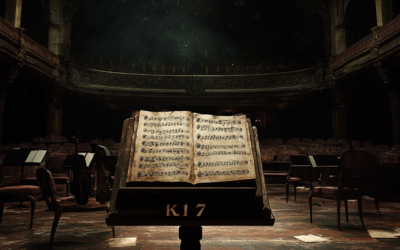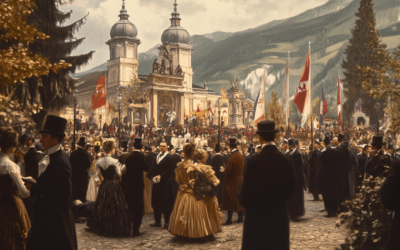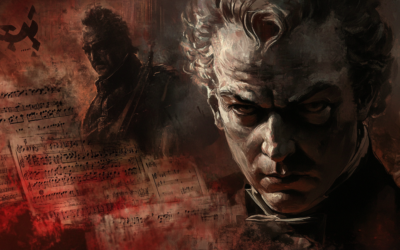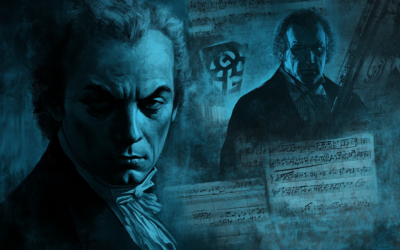Unpacking Mozart's K.89
Unpacking Mozart's K.89
This post explores the simplistic nature of Mozart’s Kyrie K.89, revealing the truth behind his early canonic compositions and their implications on his perceived genius.
Mozart: The Fall of the Gods
This book offers a fresh and critical look at the life of Wolfgang Amadeus Mozart, challenging the myths that have surrounded him for centuries. We strip away the romanticised image of the “natural genius” and delve into the contradictions within Mozart’s extensive biographies. Backed by nearly 2,000 meticulously sourced citations, this work invites readers to explore a deeper, more complex understanding of Mozart. Perfect for those who wish to question the traditional narrative, this biography is a must-read for serious music lovers and historians.
"The incapacity to adhere to compositional rules illustrates the absence of a school and a teacher; mere imitation does not equate to mastery."
Mozart: The Fall of the Gods
When we think of Wolfgang Amadeus Mozart, the image of a prodigious genius often overshadows the reality of his musical development. One area of his work that deserves scrutiny is his treatment of canons, particularly in his Kyrie K.89. While canons are frequently seen as an entry point into the world of polyphony, Mozart’s versions reveal a stark simplicity that belies the complexities often associated with great composers.
The canon, a straightforward and rigorous compositional technique, is typically the first form grasped by children learning music. Yet, Mozart’s attempts at this form in his K.89 are fundamentally elementary, mainly employing unison voices and imitating the style of his supposed mentor, the Marchese de Ligniville. The notion that these canons serve as evidence of Mozart’s mastery of counterpoint is questionable, as his works primarily reflect a lack of deeper understanding rather than a profound artistry.
Many scholars, including Hermann Abert and Neal Zaslaw, have suggested that Mozart may have benefitted from Ligniville’s teachings during a brief stay in Florence. However, the reality of this mentorship remains vague, with only a few days available for instruction. The assertion that K.89 demonstrates Mozart’s familiarity with counterpoint is undermined by its reliance on copying rather than original composition. The piece consists of merely repeating simple motifs, leading to a product that lacks musical depth and sophistication.
The K.89 is essentially a pastiche, with Mozart replicating two-bar and three-bar phrases rather than crafting a genuinely innovative work. This method of composition results in a repetitive structure that fails to engage the listener on any meaningful level. Critics have noted that the final cadenza is riddled with compositional errors, indicating a lack of guidance and proper schooling in counterpoint.
Furthermore, the idea that K.89 should be held up as a testament to Mozart’s genius is misguided. The work serves as a reminder of the danger in romanticising his early output. While Mozart may have been adept at imitating others, true innovation and mastery require more than mere replication; they necessitate a comprehensive understanding of musical language and form.
In essence, K.89 stands as a historical curiosity rather than a hallmark of genius. It exemplifies the early stages of a composer still grappling with the fundamental principles of music rather than demonstrating an accomplished mastery of the craft.
You May Also Like
Constanze Mozart’s Enduring Love
Although some have doubted her devotion, Constanze’s own words and actions illustrate a widow deeply committed to preserving Mozart’s legacy. Diaries, personal correspondence, and eyewitness testimony all challenge the notion that she neglected his memory—while the circumstances around his burial grow ever more perplexing.
A Revealing New Interview on His Thematic Catalogue
We’re excited to present a brand-new interview that challenges many of the long-held assumptions about Mozart’s Thematic Catalogue (1784–1791). Conducted by Swedish journalist Henry Grynnsten, this conversation delves into groundbreaking forensic techniques—like advanced ink analysis and digital image processing—that may change the way we view Mozart’s late works.
The Rattling Symphony: A Critical Take on K. 17
Often attributed to Mozart, the K. 17 symphony is anything but refined. Lacking orchestration and filled with gaps, it raises more questions than answers about its true authorship.
The Hidden Origins of the Salzburg Festival: A Nationalist Dream
The Salzburg Festival, far from being a mere celebration of Mozart’s genius, was born out of nationalist ambitions during a turbulent period in Austro-German history. Conceived by figures like Max Reinhardt, Heinrich Damisch, and Friedrich Gehmacher, the festival was deeply rooted in ultranationalistic ideals, transforming Mozart’s legacy into a tool for cultural dominance. The truth behind its founding has long been obscured, but the primary sources tell a different, darker story.
Mozart, Wagner, and the Nazi Myth
The Führer’s admiration for Wagner’s racially charged ideology not only influenced the policies of the Nazi regime but also reshaped the legacy of Mozart. Under National Socialism, Mozart was not celebrated as a universal genius but as a symbol of German purity and superiority. His music, stripped of its international influence, was rebranded as an expression of Aryan identity, intended to unify and inspire the German people.
Mozart, the Anschluss, and Nazi Propaganda
Following the 1938 Anschluss, the Nazi regime rebranded Mozart as the quintessential German composer, using his image to promote unity between Austria and Germany. The Salzburg Festival became a platform for Nazi propaganda, distorting Mozart’s legacy to fit their nationalistic and racial agenda.







